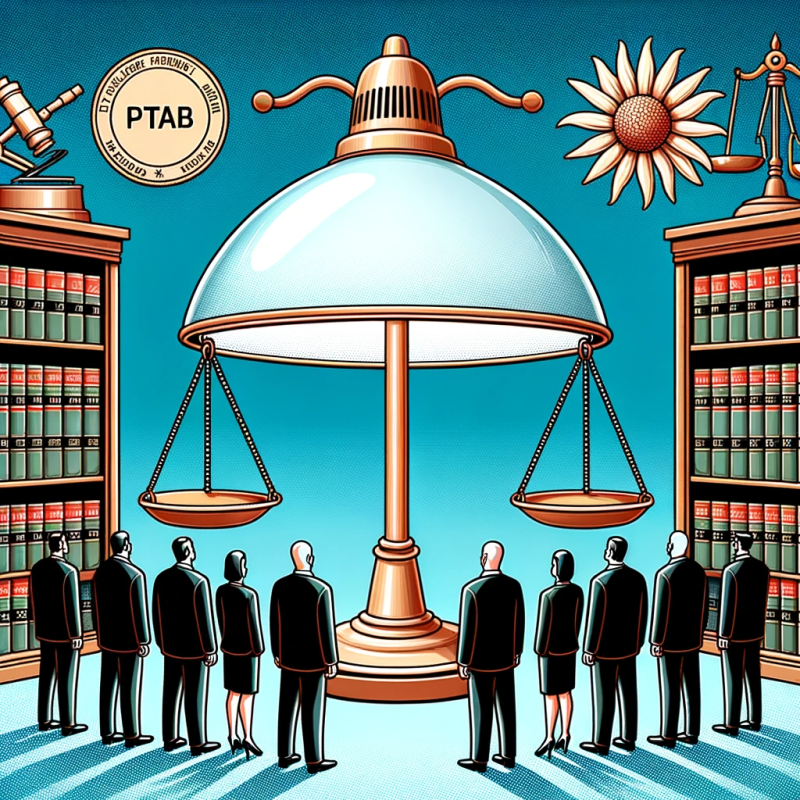Far-UVC Light, In the press, Latest Publications, News
Ramifications of the PTAB Preliminary Ruling on Far-UV Sterilray’s Patent Claims
The recent preliminary decision by the Patent Trial and Appeal Board (PTAB) concerning the validity of some claims in a patent used by Far-UV Sterilray has potentially wide-reaching implications for the Far-UVC industry. As sterilization and disinfection are pivotal for public health, the debate over intellectual property rights in this field could impact companies, stakeholders, and consumers alike.
The Controversy:
The U.S. Patent No. 11,246,951, granted to Dr. S. Edward Neister, revolves around a method and apparatus that uses UVC light for sterilizing air and surfaces by destroying a variety of harmful organisms. High Energy Ozone LLC, which operates as Far-UV Sterilray, uses this patent. However, several industry players including Eden Park Illumination, Inc., Larson Electronics LLC, Far UV Technologies, Inc., and Ushio America, Inc., have challenged its validity.
A three-judge panel at the Patent Trial and Appeal Board released its 34-page decision on Sept. 19, 2023.
Key Points of Contestation:
- Validity of Documents: FISH & RICHARDSON P.C., the legal representatives of the challenging companies, have raised eyebrows on the authenticity and relevance of “inventor-generated documents” by Neister and Far-UV Sterilray. Specific concerns lie in the undated nature of reports and photographs and the lack of concrete evidence supporting Neister’s claims related to the disinfection of human or animal tissues using the specific UV light described in the patent.
- Previous Review of Material: The legal team from KING & SPAULDING LLP, defending Neister and Far-UV Sterilray, have countered by emphasizing that the PTAB is being asked to reconsider materials which the patent office has previously reviewed multiple times. They maintain that the patent claims couldn’t have been foreseen two decades ago and have hinted at evidence supporting their stance.
- Historical Context: There’s an argument made that UV light’s use for sterilization isn’t a new concept. Experts like Oliver R. Lawal, CEO of AquiSense Technologies, Inc., mention that UV sterilization between 200-300 nanometers has been known. Moreover, professional literature about UV disinfection traces back to as early as 1930. Therefore, a significant contention arises over whether the U.S. Patent and Trademark Office erred in granting patents to what might be considered a well-known concept.
Immediate Implications and the Road Ahead:
While PTAB’s preliminary ruling raises doubts about the patent’s validity, the final decision still remains in the balance.
- Legal Delays: The ongoing litigation in the U.S. District Court for the Northern District of Texas involving Far-UV Sterilray has been paused by Judge Barbara M.G. Lynn. This halt ensures that there are no conflicting rulings between the two legal arenas. This means stakeholders will have to wait for clarity on the patent’s fate and potential infringement claims.
- Industry Impact: If PTAB eventually rules against the patent’s validity, it could open up the market for other players to leverage the disputed UV disinfection technology. Such a scenario could boost competition, potentially leading to better products and solutions for consumers.
Conclusion:
The ongoing patent dispute underscores the significance of intellectual property in the fast-evolving Far-UVC industry. As the battle between innovators and challengers continues, its outcome could shape the future direction of UV sterilization and disinfection technologies. Stakeholders and consumers must stay tuned to the legal developments to understand the evolving landscape better.

